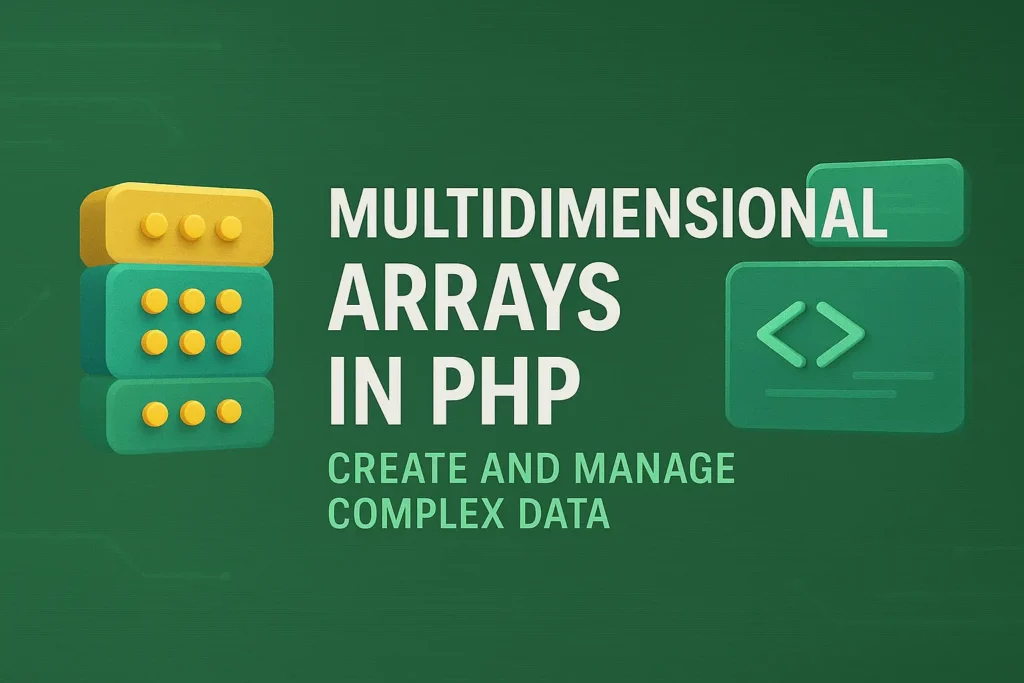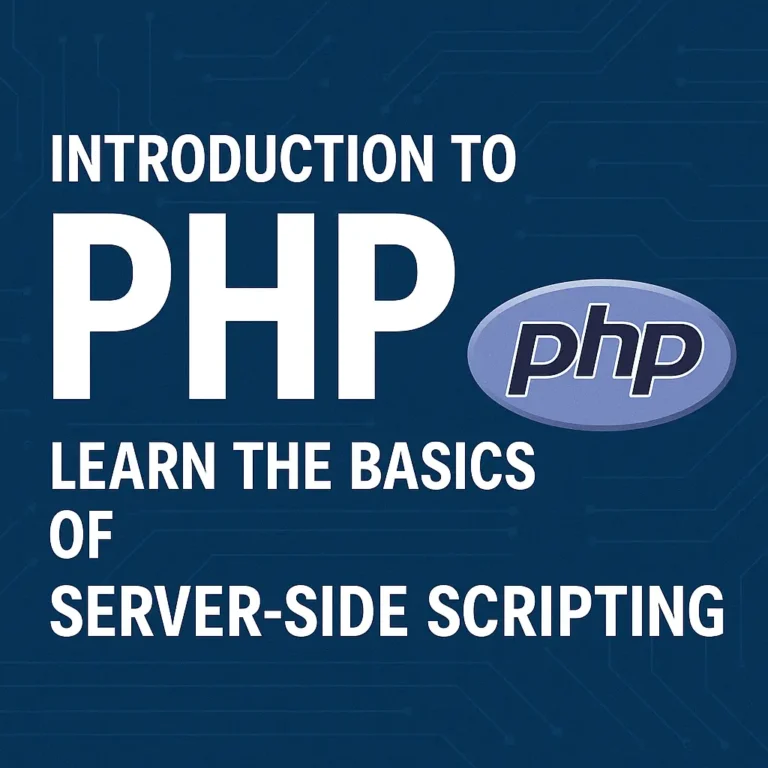By the end of this guide, you’ll have a comprehensive understanding of how to leverage these powerful features to tackle complex data manipulation tasks in PHP.
Multidimensional Arrays
Multidimensional arrays in PHP are arrays that contain other arrays as elements. They provide a way to represent data in a hierarchical or nested structure, enabling developers to organize and manipulate complex datasets effectively.
Creating Multidimensional Arrays
Creating multidimensional arrays in PHP is straightforward. You can nest arrays within arrays to any depth, depending on your data structure requirements.
<?php
// Creating a multidimensional array
$students = array(
array("name" => "John", "age" => 25),
array("name" => "Alice", "age" => 30),
array("name" => "Bob", "age" => 28)
);
// Accessing elements of a multidimensional array
echo $students[0]["name"]; // Output: John
echo $students[1]["age"]; // Output: 30
?>
In this example, we create a multidimensional array $students, where each element is an associative array representing a student’s name and age. We then access individual elements of the multidimensional array using their respective indices and keys.
Iterating Over Multidimensional Arrays
Iterating over multidimensional arrays in PHP involves using nested loops to traverse each level of the array structure.
<?php
// Iterating over a multidimensional array
foreach ($students as $student) {
foreach ($student as $key => $value) {
echo "$key: $value <br>";
}
echo "<br>";
}
?>
In this example, we use nested foreach loops to iterate over the $students array and output each student’s name and age.
Array Functions
PHP provides a rich set of built-in array functions that simplify common array manipulation tasks. These functions enable developers to perform operations such as sorting, filtering, searching, merging, and transforming arrays efficiently.
Common Array Functions
Some common array functions in PHP include count(), array_push(), array_pop(), array_merge(), array_reverse(), array_filter(), array_map(), and array_slice().
<?php
// Example of using array functions
$numbers = array(3, 1, 5, 2, 4);
// Sorting array
sort($numbers);
// Adding elements to array
array_push($numbers, 6, 7);
// Removing elements from array
array_pop($numbers);
// Displaying the modified array
print_r($numbers);
?>
In this example, we use various array functions to sort the $numbers array, add elements to the array, remove elements from the array, and display the modified array.
Best Practices
Choose Appropriate Data Structures: Select the most suitable array structure (indexed, associative, or multidimensional) based on your data organization and manipulation requirements.
Use Array Functions Wisely: Familiarize yourself with PHP’s array functions and use them judiciously to streamline your code and improve efficiency.
Keep Code Readable: Maintain code readability by using meaningful variable names, comments, and consistent coding conventions when working with arrays.
Conclusion
Multidimensional arrays and array functions are indispensable tools in PHP programming, offering powerful capabilities for organizing, manipulating, and transforming complex datasets. In this guide, we explored the fundamentals of multidimensional arrays, including creation, iteration, and manipulation, as well as common array functions for performing various array operations. By mastering these advanced array concepts and functions, you’ll be well-equipped to handle a wide range of data manipulation tasks in PHP.
<?php
// Example PHP code
$students = array(
array("name" => "John", "age" => 25),
array("name" => "Alice", "age" => 30),
array("name" => "Bob", "age" => 28)
);
foreach ($students as $student) {
foreach ($student as $key => $value) {
echo "$key: $value <br>";
}
echo "<br>";
}
?>
This PHP script demonstrates the creation and iteration of a multidimensional array $students, where each element is an associative array representing a student’s name and age. The script then uses nested loops to iterate over the multidimensional array and output each student’s attributes.






